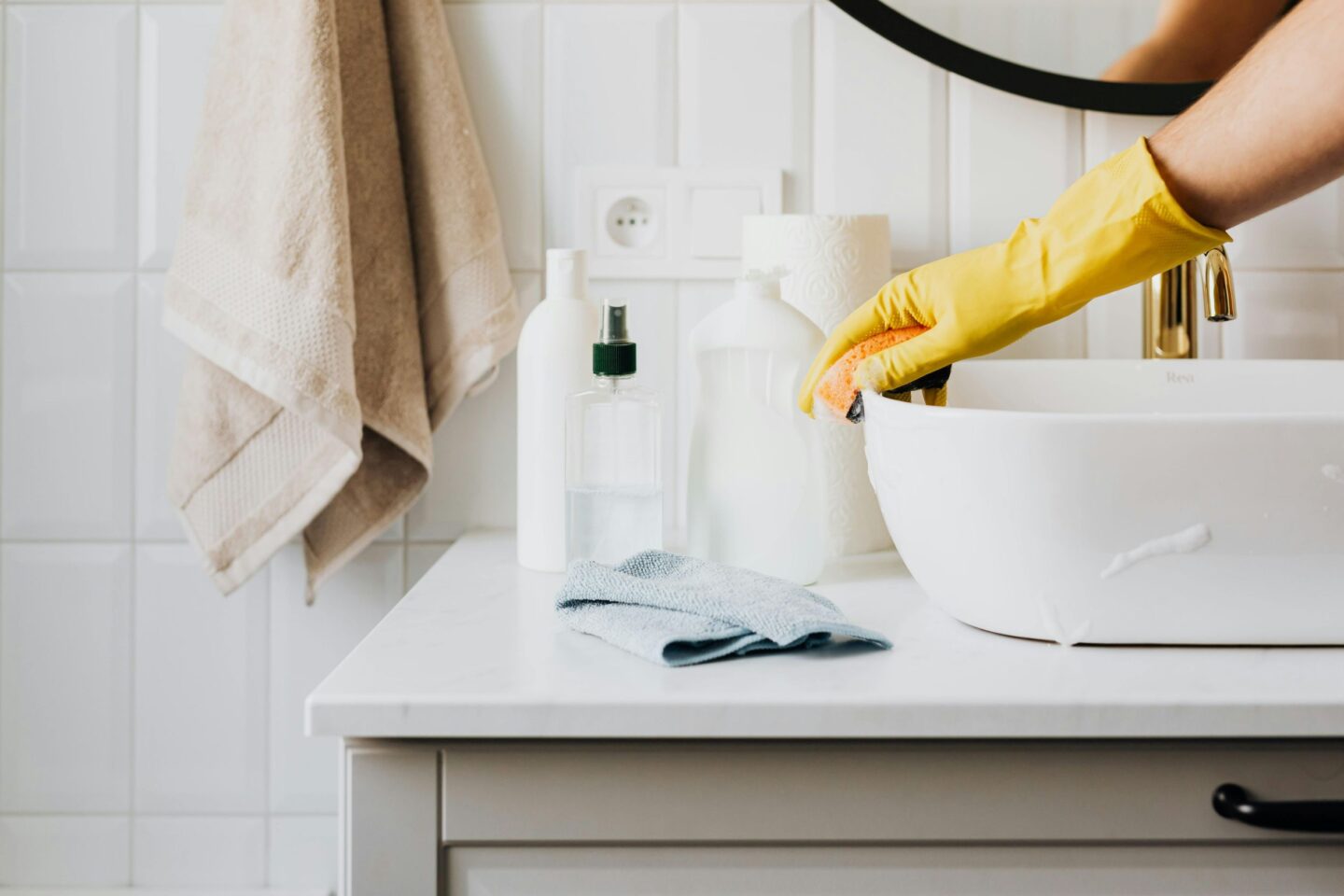
Why mould shows up on walls
Mould thrives where moisture lingers and air stands still. In many UK homes, winter brings steamed-up windows, cold corners behind furniture and north-facing rooms that never quite warm through. Condensation forms on chilly surfaces, then spores settle and grow. Leaks also play a part, from a weeping radiator valve to a tiny roof fault that leaves a damp patch that never dries. Even everyday routines contribute, like drying laundry indoors or simmering a stew without lids or extraction.
Start by spotting patterns. Tide marks or brown staining often suggest a leak. Speckled patches in clusters, usually grey, green or black, point to condensation. If mould forms behind a wardrobe or sofa, the wall may be a cold bridge. Pull furniture 5 to 10 cm away from external walls so air can circulate.
What to do before you clean
Safety first. Wear gloves, a mask and eye protection, and keep children and pets out of the room. Open windows for cross-ventilation, then cover floors with an old towel or dust sheet. Avoid dry brushing because it sends spores into the air. If the area is larger than a square metre, or anyone in the home is vulnerable, consider professional help.
Next, find the moisture source. Use a simple hygrometer to check humidity; aim for around 40 to 60 percent. Confirm that bathroom and kitchen extractor fans vent outside and run efficiently. Check gutters, downpipes and sealant around windows. If you need a calm primer on the basics, this step-by-step guide explains how to remove mould from walls safely and thoroughly.
The clean-up routine that actually works
For small patches
Dampen the area lightly with clean water so spores do not drift. Apply a purpose-made mould remover or a fungicidal wash according to the label, working from the outside of the patch toward the centre. Leave it for the recommended dwell time, then wipe with a disposable cloth. Rinse with clean water, then pat dry. Bag cloths immediately and dispose of them, then wash your hands and tools.
For larger or stubborn areas
Repeat the treatment and airing cycle over a couple of days. Keep the room ventilated and a dehumidifier running if you have one. Do not mix products, and never combine ammonia with bleach. If the plaster or wallpaper feels soft, crumbly or smells strongly musty even after drying, the moisture problem may be deeper than surface mould. This is the moment to bring in a surveyor or damp specialist.
Stains and repainting
Once the wall is thoroughly dry, treat any residual discolouration with a stain-blocking primer. Choose a breathable paint, and consider an anti-mould additive for rooms with persistent humidity like bathrooms. Painting over damp patches without solving the cause only traps moisture and guarantees a quick return.
Simple habits that prevent a comeback
Breeze, not draughts
Ventilate little and often. Open opposing windows for 10 minutes in the morning to flush out moist air. Keep trickle vents open, and shut bathroom doors while showering to contain steam, then run the extractor for at least 20 minutes afterward. In kitchens, use lids on pans and extraction during and after cooking.
Keep humidity in check
Dry laundry outdoors where possible. If you use an airer, pair it with a dehumidifier and a room kept slightly warm so moisture does not settle on cold walls. Aim for a steady indoor temperature rather than sharp on-off heating cycles, which create condensation on chilled surfaces. Wipe window condensation each morning so it does not drip onto sills and reveals.
Tackle cold spots
Pull large furniture a hand’s width from external walls, and avoid stuffing wardrobes tight against corners. Thermal liner paper or insulated plasterboard can help in problem zones. Sealing gaps and improving loft or cavity insulation reduces cold bridging, which in turn cuts the chance of moisture beading on surfaces.
When to call a professional
Get expert help if the mould covers a large area, keeps returning in the same spot despite good ventilation, or follows a leak that you cannot trace. Also seek advice if the room smells persistently musty, if there is soft or buckling plaster, or anyone at home has respiratory issues that worsen indoors. A qualified damp survey can distinguish condensation from penetrating or rising damp and prevent expensive guesswork.
Quick answers to common questions
Is bleach the best option?
Bleach can lighten stains but it is not ideal on porous surfaces where spores nest deeper. A dedicated mould remover or biocidal wash is more reliable. Always ventilate, follow label directions and never mix chemicals.
Can I just paint over it?
Not until you have fully removed the growth, fixed the moisture source and allowed the wall to dry. Use a stain blocker, then a breathable topcoat. Skipping steps almost always leads to reappearance.
What if it is black mould?
Colour alone is not a diagnosis, but treat any dark mould with caution. Wear protection, limit disturbance, and if the area is widespread or you feel unsure, call a professional. Good airflow, steady warmth and dry surfaces remain your best long-term defence.
With calm prep, the right cleaner and a few habit tweaks, walls stay fresh and rooms feel healthier. The musty corners lift, paintwork looks crisp again and your home works the way it should.